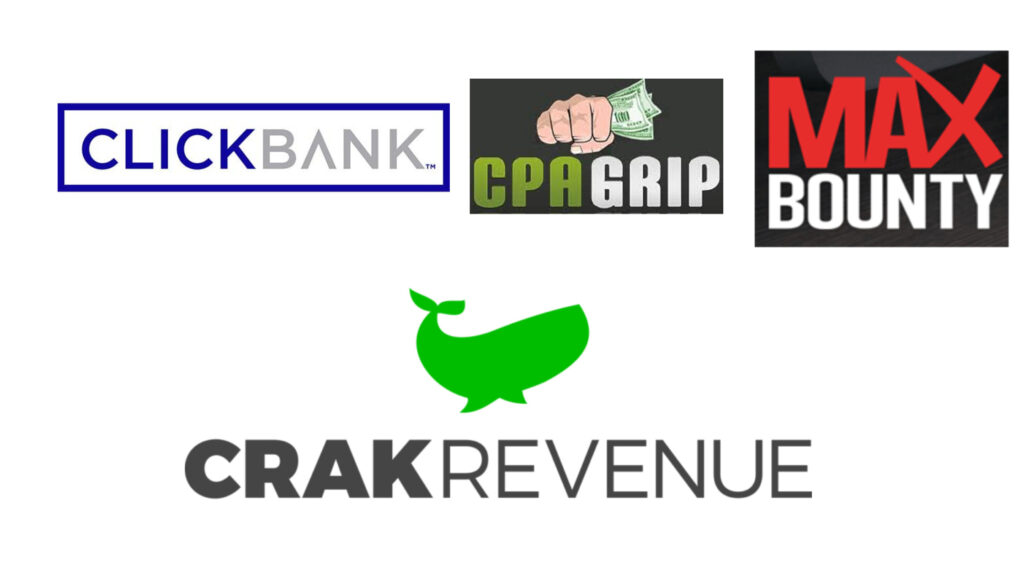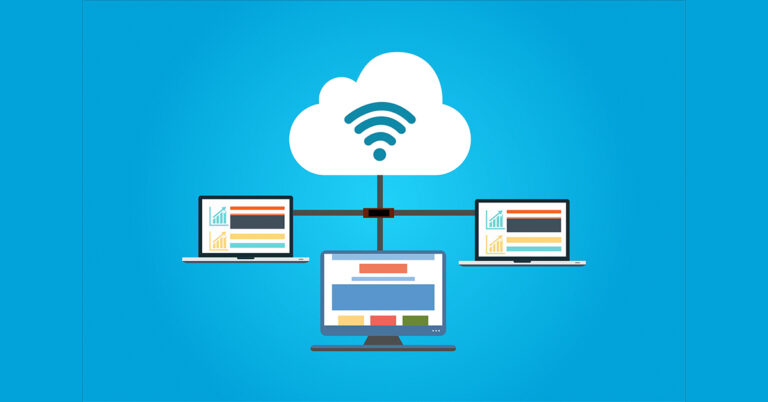What Affiliate Marketing Is, How It Works and How To Make money with It
What if you could make money whenever and wherever; even while you slept? Seems ideal, doesn’t it? You build the website you’ve always wanted, add a few affiliate links, and begin generating the passive income you’ve always desired. Do you want to work as an affiliate marketer? Have you considered collaborating with affiliates? Or are you simply interested in learning what affiliate marketing is and how it works?
Imagine that all you needed to make money online was a website. You’re not required to develop your own goods or provide services. Sounds good, right? Welcome to affiliate marketing.
If you answered yes to any of these questions and are unfamiliar with how affiliate marketing works, you’ve come to the correct spot. The concept is not difficult to grasp. You should have good knowledge at the end of this blog post. So, let’s get started!

What affiliate marketing is all about

Affiliate marketing is when a company gives you a commission for referral traffic or sales.
In affiliate marketing, you market the goods or services of another business in exchange for a cut of the revenue you bring in. Although occasionally a fixed sum, commissions are normally calculated as a percentage of the sale price.
In a word, as an affiliate (also known as a publisher), you utilize your online marketing skills to refer a product to your audience. You earn a commission when someone in your target audience purchases a product or takes action based on your recommendation.
You have the option of working with certain businesses or affiliate networks, where you register and select the programs you are interested in. The programs are typically separated into categories to facilitate the selection. Start promoting your affiliate links as soon as they’re approved on your website, in newsletters, on social media, and anyplace else you’re allowed to distribute them.
When you reach the minimum payment level, the network sends you a payment. Payment options might vary, although checks, bank transfers, and PayPal are frequently used.
Let’s take a closer look at the components of a successful affiliate marketing system.
The Four Legs of Affiliate Marketing
1. The Merchant
The creator is also known as the seller, the brand, the retailer, or the vendor. This is the party in charge of developing the product. It could be a big company or just one person.
Anyone could be the merchant behind an affiliate marketing program, from small startups to huge Fortune 500 organizations. They don’t even have to participate actively. All they need is a product to sell.
2. The Affiliate Marketers
This entity is also occasionally referred to as the publisher. Also, affiliates might be anything from lone individuals to huge corporations. A monthly commission from affiliate marketing could be a few hundred dollars or it could be tens of millions.
The marketing takes place there. An affiliate attempts to draw in and persuade potential customers of the benefits of the merchant’s goods so they decide to purchase it by promoting one or more affiliate items.
Running a blog that reviews the merchant’s products will help you do this.
It might also be a whole website devoted to locating interesting things associated with a particular subject and promoting those affiliate products.
Read Also: Affiliate Marketing Beginners Free Training- The OLSP Academy
Read More: Top 10 Best Free & Cheap Web Hosting Services To Consider in 2023
3. The Consumer
The consumer or customer keeps the affiliate system running. Without sales, there would be no commissions to pay out or revenue to split.
Whether it be a social network, digital billboard, or a search engine using content marketing on a blog, the affiliate will attempt to promote to the consumer through whichever channel they deem appropriate.
The customer needs to be aware that they are using affiliate marketing. A brief disclosure, such as “I may receive a small commission if you purchase goods from this website. Thank you for your support.” is ok.
Since the cost of the affiliate network is already included in the sale price, the buyer won’t normally have to pay more to the affiliate marketer.
4. The Affiliate Network

Few people take into account the network component of affiliate marketing. Networks must be covered in an affiliate marketing manual, in my opinion, because they frequently act as a middleman between affiliates and merchants.
Although it is technically possible to advertise someone else’s course and work out a direct revenue split with them, using a network like ClickBank or Commission Junction to handle the payment and product delivery gives your affiliate marketing a more professional air.
To even be able to market the product, affiliates may need to go through an affiliate network. This occurs, for instance, if a business solely administers its affiliate program through that network.
The affiliate network then also functions as a database of numerous products from which the affiliate marketer can select which to advertise.
Clickbank is an example of an affiliate network.
Amazon is by far the largest affiliate network for promoting consumer goods such as tools, books, toys, and home items.
Their Amazon Associates affiliate program allows you to promote any item offered on their marketplace.
Anyone can sign up and create a personalized affiliate link to Amazon products. You will receive a small commission if someone purchases through your link.
As previously said, assuming you are not intending to create an affiliate network like Commission Junction, there are basically two sides of the affiliate marketing equation to select from.
You can become a merchant and have others market your goods in exchange for a commission on purchases they generate.
Alternately, you can promote a variety of products as an affiliate marketer and earn money doing so.
While most people start off by going the affiliate route, which is undoubtedly the simpler course to pursue, it takes time and effort to acquire enough traffic to generate significant revenue only from affiliate sales.
What is an Affiliate Program?
An affiliate program (also known as an associate program) is an agreement in which an advertiser pays a commission to a publisher or influencer (the affiliate) for bringing them sales.
The affiliate is given a unique link through which referrals can be tracked (mostly using cookies). The cookie’s duration determines how long it will track clicks on the affiliate link.
There are numerous types of affiliate programs, so make sure you pick the one that most closely matches the preferences of your target market. Review websites, email marketing programs, coupon promotions, and search affiliates are examples of common affiliate programs.
What are affiliate links?
Affiliate links are special URLs that include the advertiser’s URL and the affiliate’s username or ID.
These links are used by businesses that run affiliate programs to track visitors to their websites. The affiliate is compensated if a user clicks the affiliate link and purchases the recommended item on the advertiser’s website.
One important component of using affiliate links is that they must be disclosed. Simply put, the law requires you to disclose any link or promotion that could result in a commission for you.
What is the best way to get started with affiliate marketing?
- Choosing your platform comes first. It’s not necessary to have a blog or an email list, though some programs have requirements.
- Pick products that will appeal to your target market.
- After reviewing the terms and conditions, submit an affiliate program application.
- Add your links to blog posts, newsletters, and long-form content, underneath your videos on YouTube and social media.
- Also, don’t forget to state that you are an affiliate for the product linked to and that you are being compensated for it
- Lastly, join affiliate forums like afLIFT where you can find valuable information, get some help, find business partners and even make friends with like-minded people.
Read Also: affLIFT Forum-Learn From The Top Marketers
How much can an affiliate marketer expect to make?

Affiliate marketing is worth $12 billion annually across the world. Affiliate earnings are inconsistent. Instead of looking at the money every month, you’ll do it annually. A respectable affiliate can earn between $10,000 and $400,000 annually. A super affiliate can earn up to $1,500,000 annually. The beautiful thing about affiliate marketing is that, once set up, it runs automatically 24/7. When it’s set up correctly, your affiliate marketing website will become a horse that never sleeps—it works while you sleep, spitting money day and night.
How to Become an Affiliate Merchant
The procedures to take are listed below if you want to join an affiliate program and subsequently earn money by having affiliates sell your products.
You must first have a concept for a product. A concept based on what’s already in demand.
Then, you must develop the product. I’ll only show you how to make digital things because making a physical product typically requires a huge investment and involves risks.
Since digital products often only need your time and little to no money, they are the greatest place to start.
Additionally, once your product has been developed and distributed, you must locate affiliates to market it; this is where affiliate networks might be of assistance.
1. Finding an affiliate product idea
You can’t get tied to your idea if you want to be successful with an affiliate marketing business.
Instead, simply consider the goods and services that are now available. Think about how you can outdo them by providing something that fixes the issues with those goods.
For instance, if you’re a stay-at-home parent or someone who wants to create a product that makes household chores easier, how do you research the best products and services? Just by looking at reviews, you can instantly see what’s bad about these products and what you could potentially improve upon.
Of course, you are always free to select a subject that interests or involves you.
2. Create the Product
There are many steps to take while developing a product, and while this isn’t a guide on starting a business, I still want to provide you with some solid starting points.
I’m only providing resources for establishing digital products since I don’t want you to waste time and money on making a physical product on your first try.
Online courses:
- How to launch an online course and make $220,750 in 10 days
- How To Create & Sell Your Online Course The Right Way
- How to Build an Online Course that Sells
Ebooks:
- The Ultimate Guide to Publishing Your eBook on Amazon’s Kindle Platform
- How to (Really) Make $1,000,000 Selling E-Books
- How to Start to Write an eBook and Finish it in 30 Days
Podcast/Audio:
- Podcasting for Beginners: The Complete Guide to Getting Started with Podcasts
- How to Start a Podcast – Pat’s Complete Step-By-Step Podcasting Tutorial
- How To Podcast: The Ultimate Guide to Podcasting
These are excellent places to start. Since it only requires time and, occasionally, a little financial investment—typically, a service charge or a one-time cost for software—creating digital items is much simpler.
It’s time to launch the affiliate network once you’ve finished creating the product and delivered it to your first customers.
3. Finding Affiliate Program Partners
The technical aspect of this is simple.
You may quickly set up affiliate program partners and authorize them to receive commissions using platforms like Gumroad or Digital Product Delivery.
Everflow is another superb affiliate marketing platform. In addition to aiding in affiliate recruitment, it can also be used to:
- Organize and improve your affiliate marketing initiatives.
- control and monitor spending and revenue
- control, monitor, and rapidly improve campaigns based on data
- Streamline your operations
- Manage your campaigns’ projects and assign tasks.
The difficult part begins once you’ve chosen a platform: locating partners that have an audience who are interested in what you have to offer.
Let’s take building a sandcastle guide for example.
Do you believe that anyone out there sells anything even remotely associated?
Actually, there is.
Several websites that sell educational material about building sandcastles appear when you type “learn to create sandcastles” into a search engine.
It would be a simple pitch to collaborate with them on a sale because it is a wonderful fit.
The more niched your product, the easier it will be to pitch to other merchants.
You may easily send them an email, introduce yourself and your product, and ask if they’d want to collaborate on a sale where you’ll both receive a portion of the proceeds.
Pro tip: Since there are no costs associated with reproduction, affiliate commissions of 50% or more are fairly frequent with digital products. Split the pot equitably instead of being selfish so that everyone benefits.
There are several websites where individuals review toys that can be found by searching for “toy review blogs.”
Additionally, several YouTube channels review particular toy categories. One that reviews children’s toys would be an excellent fit for your affiliate product as well if you can find one.
Just try to partner with one individual to launch your first affiliate promotion. The most important thing is to get started; commissions and other specifics can be changed afterward. You can also collaborate with an affiliate marketing company to get things going if you need assistance.
You might, however, start the adventure from the opposing side and merely turn into an affiliate yourself.

How to Become an Affiliate Marketer
The process of becoming an affiliate marketer follows the same stages as becoming a merchant.
To start, you must begin reviewing products in your niche. This can be done on a blog, a YouTube channel, or even merely by using live streaming on social media.
Second, you need to collect emails so that you can stay in touch with your audience whenever you like and don’t have to wait for them to receive your content.
Third, joint venture webinars can help you earn a lot of sales in a short amount of time while also building your email list and providing new content.
Finally, once your affiliate marketing firm is profitable, you may scale it up using pay-per-click advertising.
1. Review Products in Your Niche
It is easier to get started as an affiliate since you avoid the ‘having an idea’ and ‘developing an idea’ stages of becoming a merchant.
You already use and like a lot of products, so all you need to do to get started is talk about them publicly.
Because that’s what you’re aiming to do in this step, start by taking a look at the partners in step 4 for becoming a merchant.
Any product will do.
Really.
Note: A comparison with a direct competitor is a specific type of review that normally performs exceptionally well.
Make sure you are fair and honest when you are reviewing something.
People will recognize right away that you’re just looking to earn a fast buck if your reviews aren’t helpful.
How can you credibly market a thing if you don’t even know what it is?
It should be noted that consumer goods differ slightly from self-published books or online courses in this regard. A different situation arises if you have known a person for a considerable amount of time, trust them, and are aware of their superior talent.
You can link to the products you recommend while writing reviews on your site using affiliate links.
On other blogs, you can identify them by the lengthy “/ref…” tail that follows the regular link.
Typically, this is the first step in beginning to earn commissions.
You may get your affiliate link to any product on Amazon by simply signing up with Amazon Associates.
All you have to do is visit the product page and select “Share affiliate link.” You’ll receive a link that, if used to make a purchase, will earn you a commission.
To start making substantial money, though, you’ll need a lot of traffic if you simply count on readers clicking on the affiliate links in your reviews.
If you have direct access to your audience, you may market to them at any time—not just when they visit your website.
This is where the second step comes in.
2. Build an Email List of Your Prospects

Don’t overlook email as one of the top marketing mediums today.
I’ll show you a few simple methods for collecting email addresses from website users.
“Hello Bar” is the first.
Hello Bar adds a call-to-action button to the top of your website. This bar will appear at the top of your website whenever someone views it.
You can give them an ebook (perhaps a compilation of your three greatest product reviews) or a customized review video.
When customers click on your “Hello Bar,” you may link them to a page where they can input their emails in exchange for the content.
“Hello Bar” can also be used to form an exit barrier. This is a popup that appears when a visitor is about to depart from your website.
It is activated when their mouse moves to the top of the browser. There are a good number of tools that can do these popups for you, including “Thrive Architect.”
You may also drive visitors to your lead magnet to obtain their email addresses and start your email marketing journey immediately after they join your list. Your email marketing can easily be automated using email automation tools. MailerLite is my favorite email automation tool for beginners since it offers a free account for up to 1000 subscribers. For semi-advanced users, I recommend GetResponse and Hubspot for advanced marketers.
Just don’t go overboard.
It’s doubtful that your visitors will do anything if you give them 20 things to do. You should only have one call to action in your sidebar. Again, it should provide something in exchange for people’s email addresses.
You don’t need a lot of email addresses to make the email list worthwhile because you’re collecting them around a very specific topic, such as discovering the best straightening iron, juice maker, mini-oven, and so on.
Even with a list of fewer than 500 people, you can generate large sales.
Simply keep your audience engaged by delivering them regular updates, ideally once a week.
Don’t only focus on sales. Just let them know when a new review is available.
Send them a specific call to action to purchase a product every now and then. Maybe you’ve just discovered a new favorite in the most recent review, and you truly like it.
You can inform your audience of your decision to change your mind, explain why, and suggest that others do the same.
Read More: How To Get Started With Email Marketing & Make Money
3. Use Webinars to Educate Your Audience
Webinars are amazing.
Assume you want to buy a new camera.
What makes you want to get a camera even more:
- reviewing a blog post
- seeing a camera in action in a live demonstration
Of course, number two!
You may build a website or a simple landing page for your webinar using a platform like GroovePages.
Get people to register for your webinar by promoting it on social media for a week beforehand.
Webinars are excellent for engaging with your audience one-on-one, demonstrating the product you’re marketing live, and responding to any queries they may have.
You could:
- showcase the attributes of the product
- discuss the product’s advantages and disadvantages by demonstrating several uses for it.
- Describe your own experience with the product to your audience to help them get the most out of it.
When they learn all the awesome things your product can enable them to accomplish, just imagine how excited your audience will become.
Pointing to and sharing your affiliate link at the end of the webinar is a soft sell that comes easily given that you just spent an hour talking about the product.
It won’t feel pressured, and your customers can still spend as much time as they want to decide whether or not to buy.
Pro Tip: Ask your merchant if they can offer your audience a special offer. They’ll often be happy to provide you with a discount or special bundle to further encourage folks to buy if you promise to get their goods in front of a few hundred people.
Read Also: Overall best website builders to switch to in 2023
3. Grow Your Business with PPC Advertising
You might start considering paid advertising if your affiliate marketing firm gains traction.
However, keep in mind that you should only do this once you have found a strategy to recoup your costs.
Everything here revolves around conversions.
You can make use of PPC advertising to:
- get people to sign up for your webinar
- grow your email list
- make more sales
For instance, if you Google “learn leadpages,” you will notice that LeadPages is running Google ads to promote their weekly live webinar and is advertising for this phrase.
So, starting with keywords that would help people learn more about your product or topic would be wise.
You can also focus on your competition this makes it easy to reach an audience that belongs to someone else in the same niche as you.
Now, while you might try to target those who are merely looking for a review of your product, you’d likely be better off focusing on optimizing your SEO.
The percentage of people who buy just after reading a review is normally lower, therefore consider paying for these reads. You only make a few dollars or perhaps pennies every sale, depending on the product pricing, therefore the margin you can spend on ads is not very large.
In most circumstances, it is beneficial to promote email list sign-ups.
Indeed, using ads to attract people to sign up for a webinar is the best way to go.
You will win in three ways:
- They’ll be added to your email list so you may reach them again whenever you want.
- There is a possibility that they will sign up for your live webinar and purchase the item.
- You can add them to an email autoresponder series that prompts them to make a purchase.
Therefore, you have several options to convince customers to buy your goods using this method.
After the autoresponder series, during the webinar, and through subsequent emails, they have the opportunity to purchase.
When your sales start coming in from so many different channels and start to grow, that’s when you can truly blow up your business with paid advertising by simply driving visitors to the sales mechanisms that are already in place.
Ways to Promote Affiliate Marketing
Aside the standard methods of boosting affiliate marketing links, there have been remarkable new trends in recent years. This section will look at some of these trends as well as more traditional methods of promoting affiliate links.
1. Influencer Marketing
Thanks to social media and websites like YouTube, influencers are one of the leading faces of contemporary affiliate marketing.
Among the most influential people in the world are Christiano Ronaldo, Kim Kardashian, Kylie Jenner, and Selena Gomez. On the other hand, a lot of ordinary people have achieved fame simply as a result of their position as influencers and their capacity to produce interesting material and engage with their audience.
Examples of top influencers that created their platforms from scratch include photographer Murad Osmann, TikTokker Khaby Lame, and cleaning guru Mrs. Hinch.
Influencers are frequently compensated by brands to promote their products, but it also makes sense for them to provide affiliate links to their followers in exchange for commissions.
If your business has a sizable or passionate customer base, you should think about influencer marketing.
For instance, you can publish and advertise your links on Instagram by:
• Tagging the brand when you’re promoting their product.
• Add links to your bio.
• Use Instagram Stories and IGTV to talk about and promote products.
• Create product comparisons and gift guides to educate your audience.
To entice visitors to click, include a compelling call to action (CTA) when you add links.
One last piece of advice: only share things you enjoy and choose ones that make sense for your business or niche. Your audience must believe that you are thinking about their interests.
Read Also: Best Practices in Email Marketing to Fetch You Money
2. Blogging

When bloggers wish to monetize their work, affiliate marketing is frequently their first choice. This is a major source of income for a lot of affiliate marketers. Michelle Schroeder-Gardner made $1,536,732 in one year with her blog, mainly through affiliate marketing.

Bloggers typically focus on a specific niche and share products or services that can be of interest to their readers. For instance, it might be credit cards, health trackers, or customer management systems.
This type of affiliate program works well with niche businesses, and the further you can niche down, the better.
You can use banners, videos, pop-up windows, or links in blog posts to incorporate affiliate marketing on your website.
But only use links when they are appropriate and don’t oversell. Share your links through special deals, gift guides, and product comparisons if you have a newsletter.
Finally, focus on only providing links that are useful and beneficial to your readers. Make sure you initially offer value before just going for the sale.
3. Referral Links
After joining an affiliate platform, you get access to a customized URL called a referral link.
You get paid a commission when readers of your blog, newsletter, or social media marketing page click the link and buy something.
This method usually works well for businesses that publish blogs or newsletters regularly. Referral links may also be utilized in:
- reviews/tutorials
- resource pages
- some forums
- banners and video content
- blog posts
Regardless of how you use referral links, make sure your content is relevant and your links are contextual and visible.
Before sending out content to new subscribers, consider creating customer relationships and trust. It’s not appropriate to share affiliate links directly on social media, but you can share links to your published articles that include affiliate links.
As a final piece of advice, keep in mind the basic requirements for producing quality content, such as using keywords, integrating CTAs, and developing clickable headlines.
4. Social Media Sites

Affiliate marketers are permitted to promote on Facebook and other social media marketing platforms, but it is your responsibility to ensure that your ads adhere to the rules of each channel.
Sharing your affiliate marketing links on Facebook or other similar websites may be the best option for affiliates with a sizable following or a very niched product.
You can distribute your links in the following ways:
- Facebook ads
- personal pages
- groups
- promotional posts
Also Read: Is Social Media Marketing an Effective Marketing Strategy? -Learn more
Also Read: Social Media Marketing vs Digital Marketing- The 4 Major Differences
Also Read: The 8 Social Media Marketing Strategies That You Must NOT Ignore In 2023
5. Email Lists

Another well-liked method of distributing affiliate links to your audience is through email lists.
Through services like MailerLite, GetResponse, or other comparable services, marketers create email lists of their registered subscribers. Usually, they offer a free training session, template, or eBook as a perk for signing up.
Affiliate links are frequently included in the newsletters, allowing the marketer to profit when a subscriber clicks on a link and makes a purchase.
No matter what niche they are in, marketers that already have an email list with active subscribers can profit from this kind of affiliate link promotion.
This approach is appropriate if you already have a list or provide your audience with useful stuff, like training and advice. The affiliate program offers that are time-limited and unique are also effective.
This method, for instance, is employed by Digitalmarketer.com to promote both its own and affiliate marketing products.
6. Create Videos

Not only do people enjoy video content. They Love it. Consider YouTube’s 2.6 billion active users.
Sharing video content is also a great use of social media platforms like Facebook, Instagram, and TikTok.
Video material is simple for busy people to consume and ideal for demonstrating how to use a product, its advantages to them, and outlining its benefits and drawbacks.
Adding affiliate products, adding them to your bio, pinning them beneath the video on YouTube, and being active on your community page, like the gaming product channel Worth a Buy, is the generally accepted best practices.
If video demonstrations serve to convey the benefits of your product to consumers and instill trust in them, you might want to use this strategy.

Mistakes to Avoid in Affiliate Marketing
Affiliate marketing can have a negative aspect, even though many people find it successful.
Affiliate marketing is a target of numerous sorts of fraud, such as cookie stuffing or dropping, just like any other industry that involves making money. There are other behaviors to avoid, though, such as:
1. Creating low-quality content: The days of dominating Google with keyword-rich content are long gone. Write high-quality articles instead, and give each one something it needs.
2. Using the “hard sell” strategy: Place more emphasis on developing relationships than on using a direct sales strategy. Once a customer trusts you, they are more likely to purchase what you suggest.
3. Failing to verify a product’s legitimacy: Although that health product may sound great and provide large commissions, does it live up to its promises? Consider your products carefully and read reviews online.
4. Buyer misinformation: It should go without saying, but some affiliates may exaggerate the advantages of their items to earn commissions. Making bold claims may increase click-throughs, but it is immoral and may even be against the law.
Your reputation as an affiliate marketer is everything. You won’t make any money if your audience does not believe or trust you. Prioritize your audience over anything else.
Read Also: Social Media Marketing Tools That Will Triple Your Results
How to Measure Affiliate Marketing Success
How can you tell if your marketing efforts are effective? by keeping track of metrics.
Begin with your affiliate program dashboard and see what it reveals. Affiliates that use ad programs such as Google, Facebook, or Amazon can use their dashboards to track statistics for individual channels.
Additionally, there are affiliate marketing tools that aid in tracking performance, gathering analytics, and providing competitive information.
The following are the main affiliate metrics to pay attention to:
- clickthroughs
- ad spend
- ROI
- conversion rates
- net monthly sales
- overall revenue
These stats will show you how frequently people click on your links and make purchases. Pay attention to the content types that work best in boosting sales and produce more of those.
How to Choose the Best Affiliate Marketing Strategy for Your Business
Any business can be successfully monetized through affiliate marketing, but the success of your campaign depends on the technique you choose. Here’s how to choose the ideal affiliate marketing approach for your company.
1. Make sure your audience will respond to the strategy.
Do they use social media to hang out? using forums? Do they look for answers on Google? Identify your potential clients’ locations and focus on them there.
2. Recognize the type of content that engages your audience.
What makes people click to learn more or register for a service?
3. Which offers are most effective for your specific audience?
Is it gifts? Competitions? Discounts? Your affiliate marketing efforts can succeed or fail based on the offerings you choose.
4. Utilize A/B testing
To improve your affiliate approach, compare the results and make use of the information.
5. Recognize the concerns of your customers
Provide comprehensive content and pertinent items to address those problems.
Conclusion
Affiliate marketing is a simple way to monetize your content and earn money online.
Affiliate marketing is evolving as the times change. Once upon a time, blogging and email lists were the primary ways to spread affiliate links, but social media has transformed the way influencers earn money promoting affiliate products. It’s even more effective with the aid of social media marketing tools.
Follow the tips presented in this article, and you’ll be able to engage your audience, convert passive readers into active buyers, and increase your paycheck one click at a time.
Whatever approach you use, make sure the products you post are relevant to your audience and avoid any unethical marketing methods.







